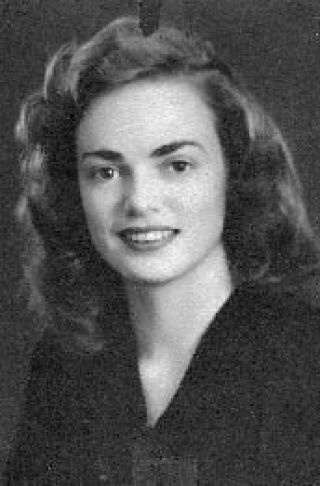“Dad sold a heifer. That’s how we paid for my school each semester when I went to Washington State,” said Lopez Island native, Joan Congdon.
“My parents had a dairy herd on our farm along Center and Hill Road. We lived in the house with the cupola. Mother and dad hand milked about 35 Jersey cows every day, morning and night. Electricity came to the islands in the 30’s and made it a little easier. The power plant was about where the Islander is now.”
“My father, Malcolm ‘Scottie’ MacLeod, was from Scotland, the oldest of eight, and was expected to be a fish monger like his father,” Joan said. “He didn’t want to do that so his mother sent him to her brother’s in Seattle. The ship stopped at Richardson and dad said Lopez reminded him of Scotland. He got his citizenship by serving in World War I and moved here in 1919, worked, and bought our farm.”
“My mother was Mary ‘Mae’ Higgins,” Joan continues. “My grandparents moved to Lopez in 1894 when my mother, Mae, was an infant.
My grandfather was a ship’s engineer and came from Wales. When my mother was about 16, my grandmother became quite ill and was hospitalized. My grandfather arranged for Mae to go to Wales. She became a nurse and returned eight years later. My grandmother died in the 1918 flu epidemic. Mother visited my grandfather on the island and met Scottie MacLeod at the Richardson store. They were married in 1922. I was born in Vancouver B.C. where we had relatives. Mother was in the hospital ten days. The bill was $21 and included a dozen diapers.”
Joan attended Center School with her siblings. They walked to the two-room school, now the Grange Hall, with sandwiches made from bread her mother baked regularly and often filled with Sandwich Spread. Trading for Wonder Bread with bologna was a treat.
“You knew everyone then and everybody was in the same situation,” Joan said. “There was not much traffic from north to south. Sometimes my folks would go to the Chadwicks’, an Indian family that lived on Mud Bay, on Sunday. It was a big trip. There were few part-time homes and only three houses on the peninsula. On the Fourth-of-July, everyone went to Odlin Park for ballgames, races and the salmon buried in the beach for cooking. Women brought salads and custard pies. Somehow we survived without getting food poisoning. Boys had a great time throwing firecrackers under the feet of elderly ladies. We rarely went off island more than once a year unless we had a toothache or something. For a real treat we sometimes went to Guest Day in Anacortes. I felt like I was going to New York City!”
Joan’s dad was a bag piper and involved in most community activities. “When he was sheriff,” Joan said, “and something was stolen, he would find the guilty party and say, ‘Why don’t you return what you took from farmer Joe?’ There would be no admission of guilt, but the item would soon reappear.
During WWII, islanders took turns going up on Richardson Hill to watch for aircraft they had learned to identify. Dad worked all day, would go there at night and return in the morning to milk again.
Both the community and Center Church were very important to us. We had three years of high school here so most of my class went off island for their fourth year, but I was sent beginning with my freshman year. I lived with families in Sedro-Woolley but returned for one semester after the new school was built here in 1941. There were eight students in my class.”
Joan met Bob Congdon at college where she graduated with a degree in Home Economics. She lived with her sister and worked retail before marrying Bob nearly 59 years ago. After marriage, the couple lived in Portland, Oregon where Joan worked for a clothing specialty store and became an automobile insurance underwriter. “I loved it,” she said. A stint with a newspaper followed when the couple moved to Vancouver, Wash., where they raised their children. “We have two great kids,” Joan said.
The Congdons moved to Baltimore where Bob became the East Coast vice president in charge of the asphalt division for Chevron and Joan helped set up a large thrift shop. Returning to San Francisco, Joan assisted with creating a thrift shop for the California Assistance League. “That’s my love,” Joan confesses. During the past 25 years of retirement, the couple lived in Tucson and built a home on Lopez. They have lived on the island full time during the past five years where the local thrift shop has benefitted from Joan’s talents.
“We have been really fortunate and we know it. I believe you should enjoy every day doing what you can. Don’t wait too long,” Joan said.



